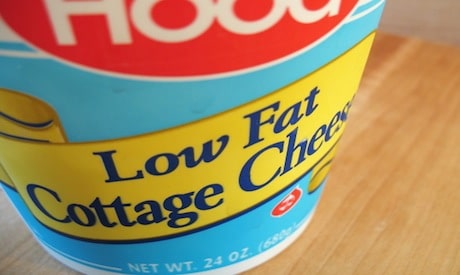
The words “low fat” on food labels sound like a positive thing. But if you reflect on them for a moment, several obvious questions come to mind. For example, “low fat as compared with what?” and “What does low fat really mean?”
One question you may not consider is “Will these words affect how much of this food I eat?” That is the question a group of investigators considered and reported on in an article appearing in Appetite.
A total of 47 normal and overweight adults (24 men, 23 women) participated in the study. All of them were fed the exact same lunch on three different occasions. However, although all the food was identical, each time the participants were told one of the following bits of information about their lunch: that it was low fat/low calorie, that it was baseline (average), or that it was high fat/high calorie.
Here’s what the investigators found:
Individuals ate 3 percent more when they were told their lunch was low fat compared with participants in the other two groups. The people most likely to eat more were overweight men.
Thirty percent of the participants said that being told the lunch was low fat made them enjoy their food more and also made them eat more.
Eleven percent of those told the lunch was high fat said they liked the food more.
None of the individuals who were told lunch was low fat said the information made them enjoy the food less, but 30 percent in the high fat group reported that the information caused them to enjoy the food less.
Nearly all (94%) of the subjects said they would purchase the low fat/low calorie test meal in the grocery store compared with 49 percent who were told the lunch was high fat.
The authors concluded that “Low fat/low energy information can positively influence food and energy intake, suggesting that foods labelled as ‘low fat’ or ‘low calorie’ may be one factor promoting the consumption of large food portions.” Therefore, the words “low fat” on foods can backfire.
A similar finding was reported by Cornell University researchers back in 2006. In three separate studies, the investigators found that putting a low-fat label on snack foods resulted in people eating up to 50 percent more of the food than did people who saw the same foods without the low-fat label. As in the more recent study, the authors also found that people who were overweight ate 60 more calories than did normal weight participants.
The take-home message is to be conscious of your food choices:
- Read the nutrition and ingredient information carefully on all food products. Do not be misled by words such as “low fat” and “low calorie.” Identify the number of fat grams and number of calories in each serving.
- Know what “low fat” means. According to the Food and Drug Administration, “low fat” means a food provides 3 grams or less per RACC (Reference Amounts Customarily Consumed). For meals and main dishes, low fat refers to 3 grams or less per 100 grams and not more than 30 percent of calories from fat.
- When purchasing a large sized package of a food (e.g., snacks, nuts, candies, crackers), measure out single serving sizes into small containers so you will not eat mindlessly out of the bag or box.
Photo credit: vladozlatos




